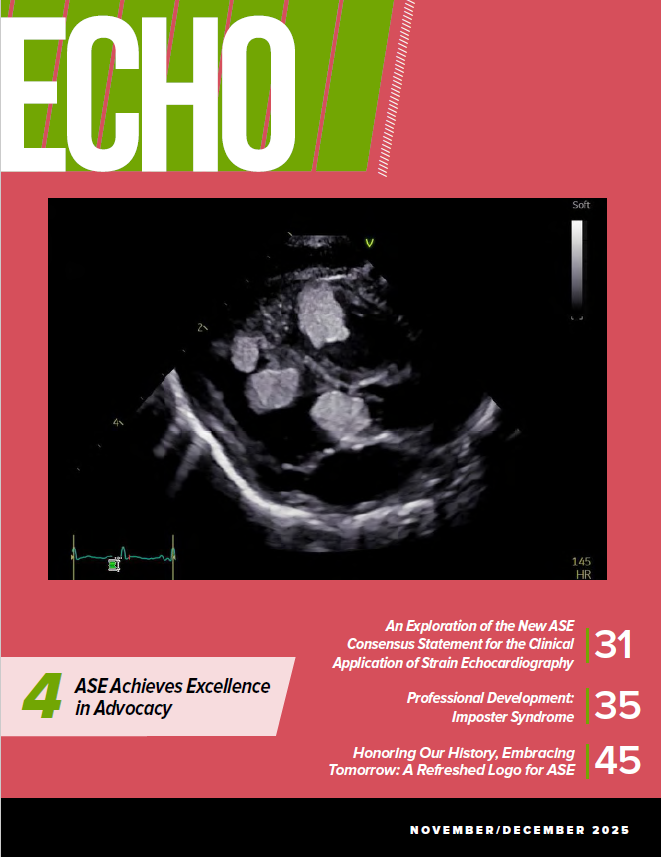
Echo Magazine November-December 2025
December 22, 2025

It’s the Most Wonderful Time for December CASE
December 17, 2025

ASE News
ASE 2026 Education Events
December 11, 2025

Snow Time Like the Present: Polar Plunge into December JASE
December 3, 2025

ASE News

Gobble Up a New Issue of November CASE
November 18, 2025

ASE News

ASE News

ASE News
Pertains to Strain? November JASE Has You Covered!
November 5, 2025

ASE News
CMS Finalizes CY 2026 Physician Fee Schedule Final Rule
November 3, 2025

